Eukaryotic microbes, structure, endosymbiosis, protists, fungi, algae
1/56
There's no tags or description
Looks like no tags are added yet.
Name | Mastery | Learn | Test | Matching | Spaced |
|---|
No study sessions yet.
57 Terms
What major organelles are found in eukaryotic cells (not necessarily all present in every cell)?
Nucleus
Mitochondria
Chloroplasts (in photosynthetic organisms)
Endoplasmic reticulum, Golgi apparatus
Peroxisomes, lysosomes, glyoxysomes, microtubules
Cilia, and flagella.
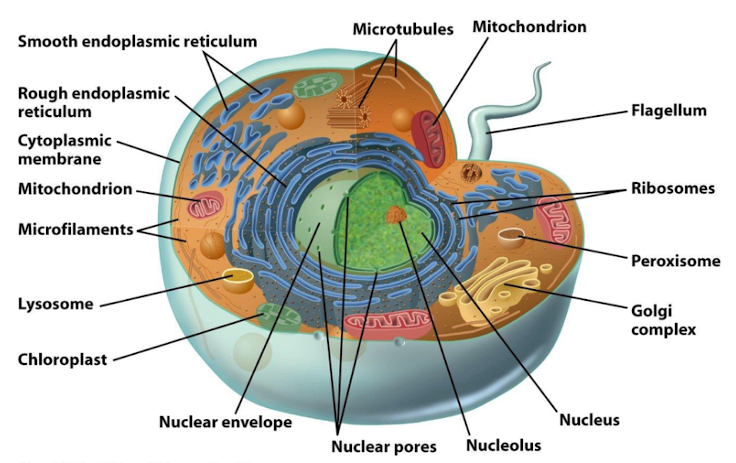
What is the function of nuclear pores in the nucleus?
They export mRNA and import proteins such as histones that package DNA.

What is the nucleolus?
A specialised region of the nucleus where rRNA is synthesised and ribosomal proteins are imported for ribosome assembly.
Describe mitochondria and one key metabolic feature.
Double-membrane organelles with inner membrane infoldings (cristae) containing ETC components and ATP synthase;
Matrix lumen houses citric acid cycle (CAC) enzymes.
Transport proteins that ferry ATP and other substances in and out of the mitochondrion.
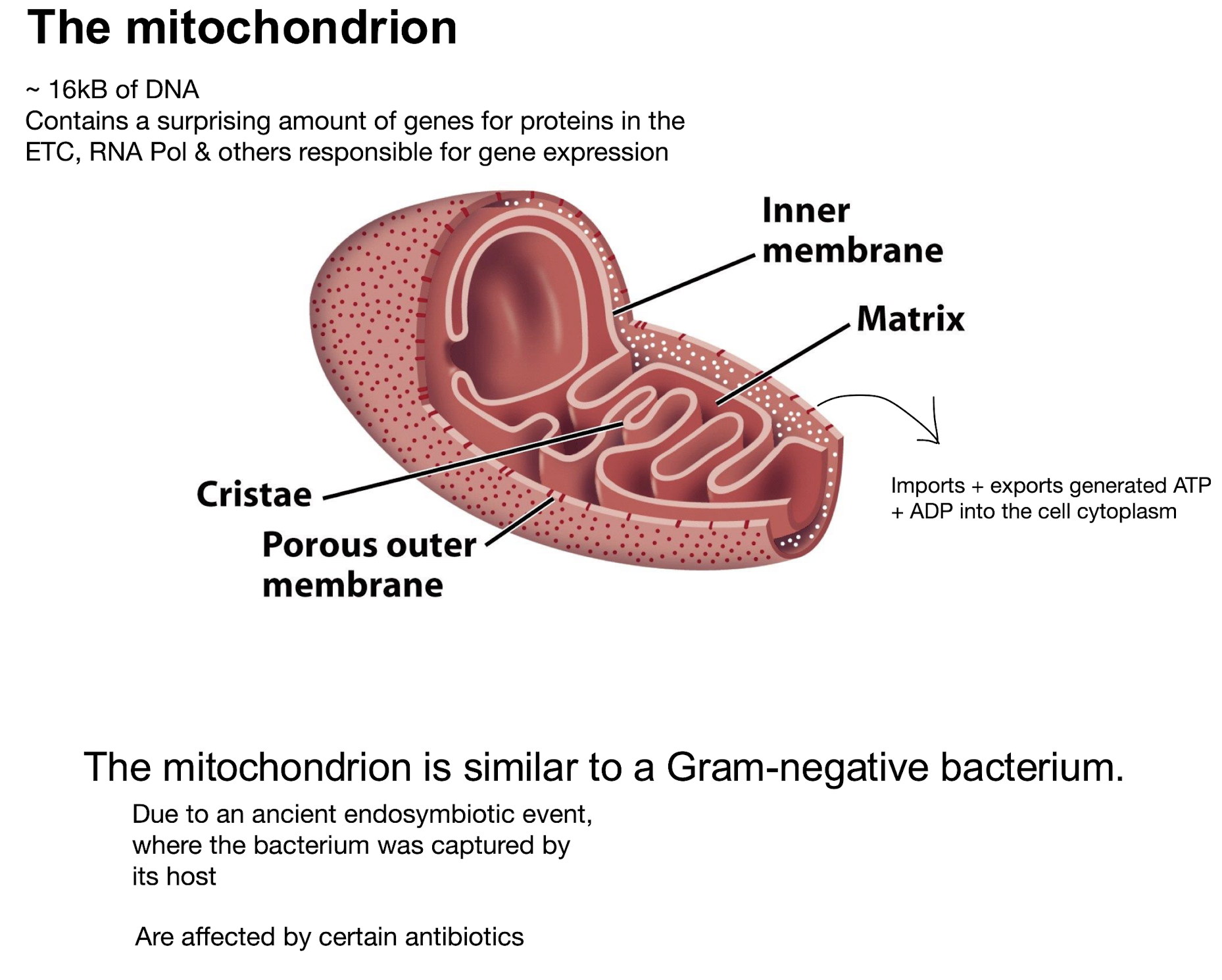
What structural features define chloroplasts in photosynthetic eukaryotes?
Extensive thylakoid membrane system organised into disc-like thylakoids
Stroma contains Rubisco and Calvin cycle enzymes which convert CO2 into sugars
Contain their own DNA and replicate independently of the cell.
Larger genome than mitochondria, many genes encoding for Ribulose-bisphosphate enzymes

What are hydrogenosomes and where are they found?
Organelles in some amitochondriate anaerobic protists (e.g., Trichomonas vaginalis)
Ferment pyruvate to acetyl-CoA, CO2 and H2, using hydrogen lyase
Acetyl-CoA produces ATP via substrate-level phosphorylation.
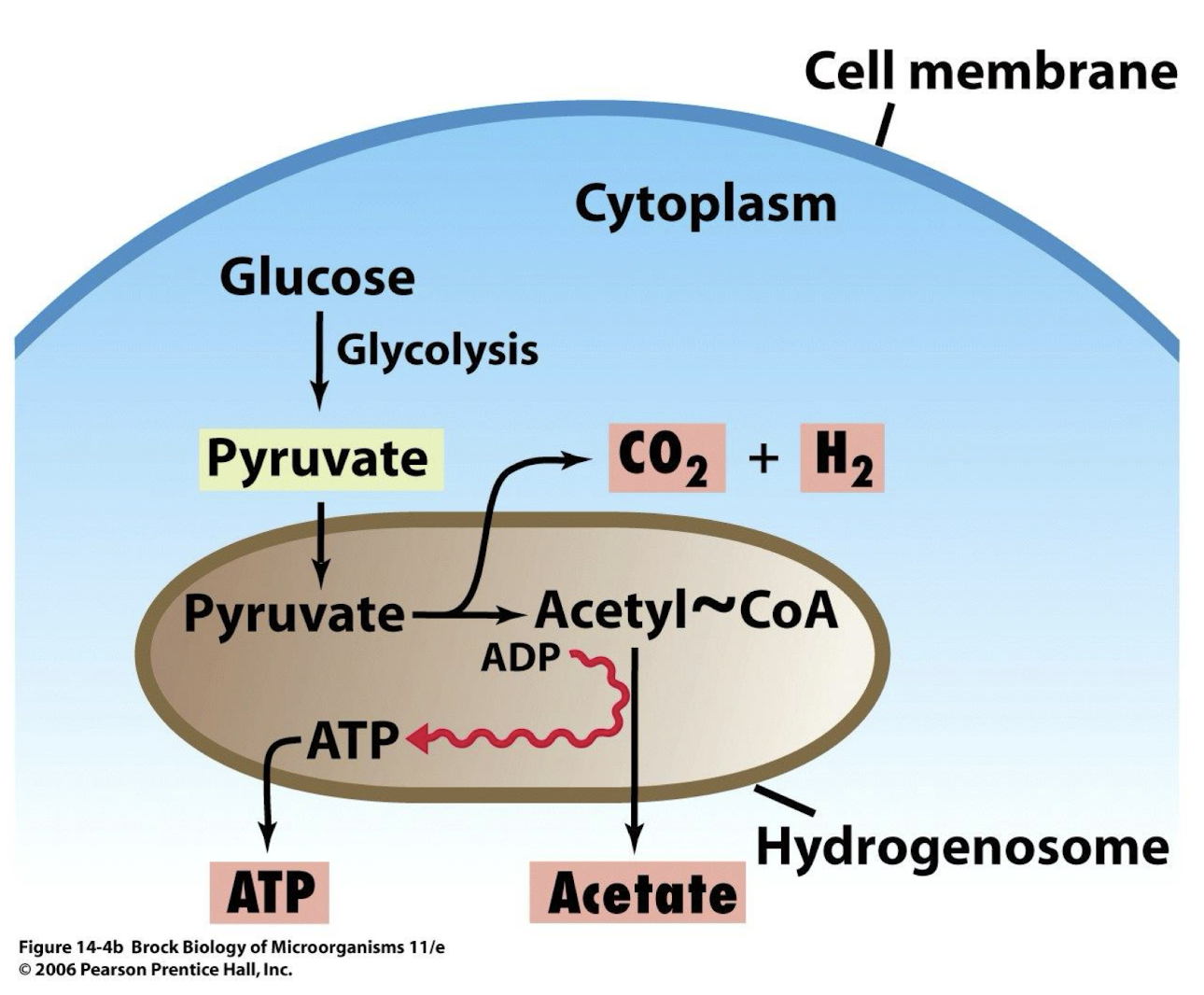
What is the role of lysosomes?
Vesicles with hydrolytic/digestive enzymes e.g. hydrolytic enzymes like proteases
Fuse with phagosomes - vesicles containing ingested particulate nutrients, for digestion to digest ingested material and turnover damaged proteins
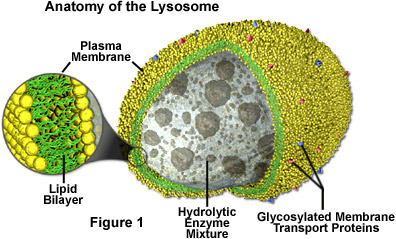
Differentiate Rough ER and Smooth ER.
Rough ER has ribosomes and folds/secretes proteins; secreted proteins with signal peptides are embedded / secreted through the RER membrane
Smooth ER lacks ribosomes and synthesises lipids e.g. using FA synthase and polysaccharides.
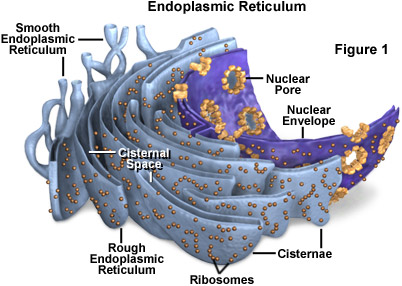
What is the Golgi apparatus known for?
Trafficking and modification of proteins from the ER inside smaller vesicles that fuse with the cytoplasmic membrane, adding to the phospholipid bilayer and releasing their contents to the extracellular environment (exocytosis)
Directing hydrolytic enzyme-containing vesicles to lysosomes.
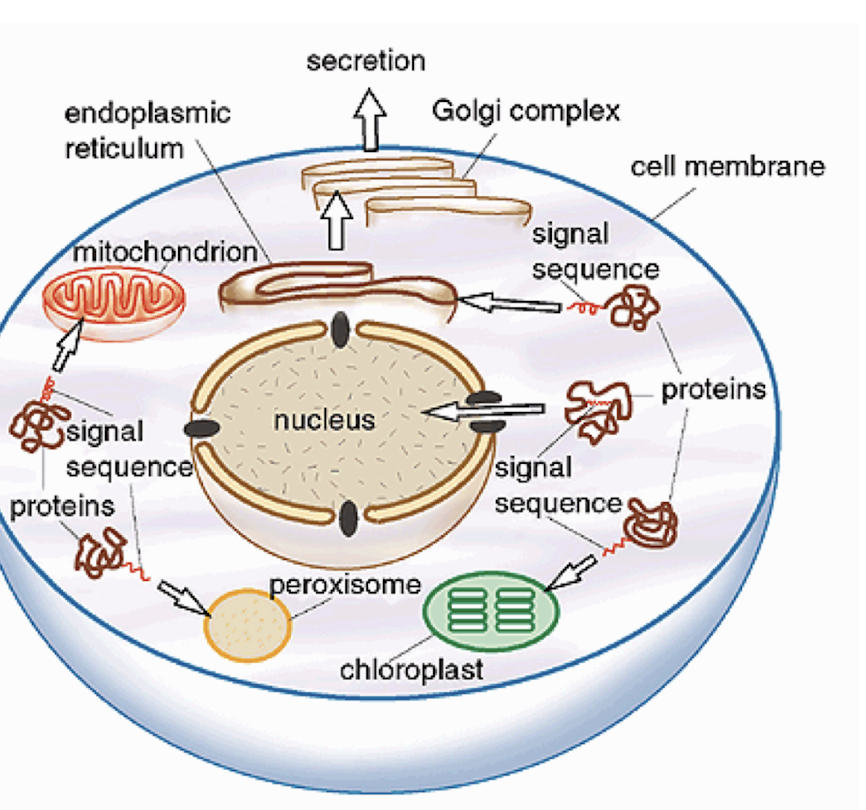
Define peroxisomes
Peroxisomes perform FA breakdown via β-oxidation and oxidative reactions (producing H2O2);
Define glyoxysomes
Specialised peroxisomes that carry out the glyoxylate bypass, so cells can make sugars from fatty acids.
What is the main purpose of the citric acid cycle (CAC)?
The main purpose of the citric acid cycle (CAC) is to generate energy through the oxidation of acetyl-CoA, producing ATP, NADH, and FADH2 while also providing precursors for biosynthesis.
What is the glyoxylate bypass and its metabolic purpose?
A CAC bypass that preserves carbon skeletons by producing malate from isocitrate via isocitrate lyase, replenishing CAC intermediates for biosynthesis.
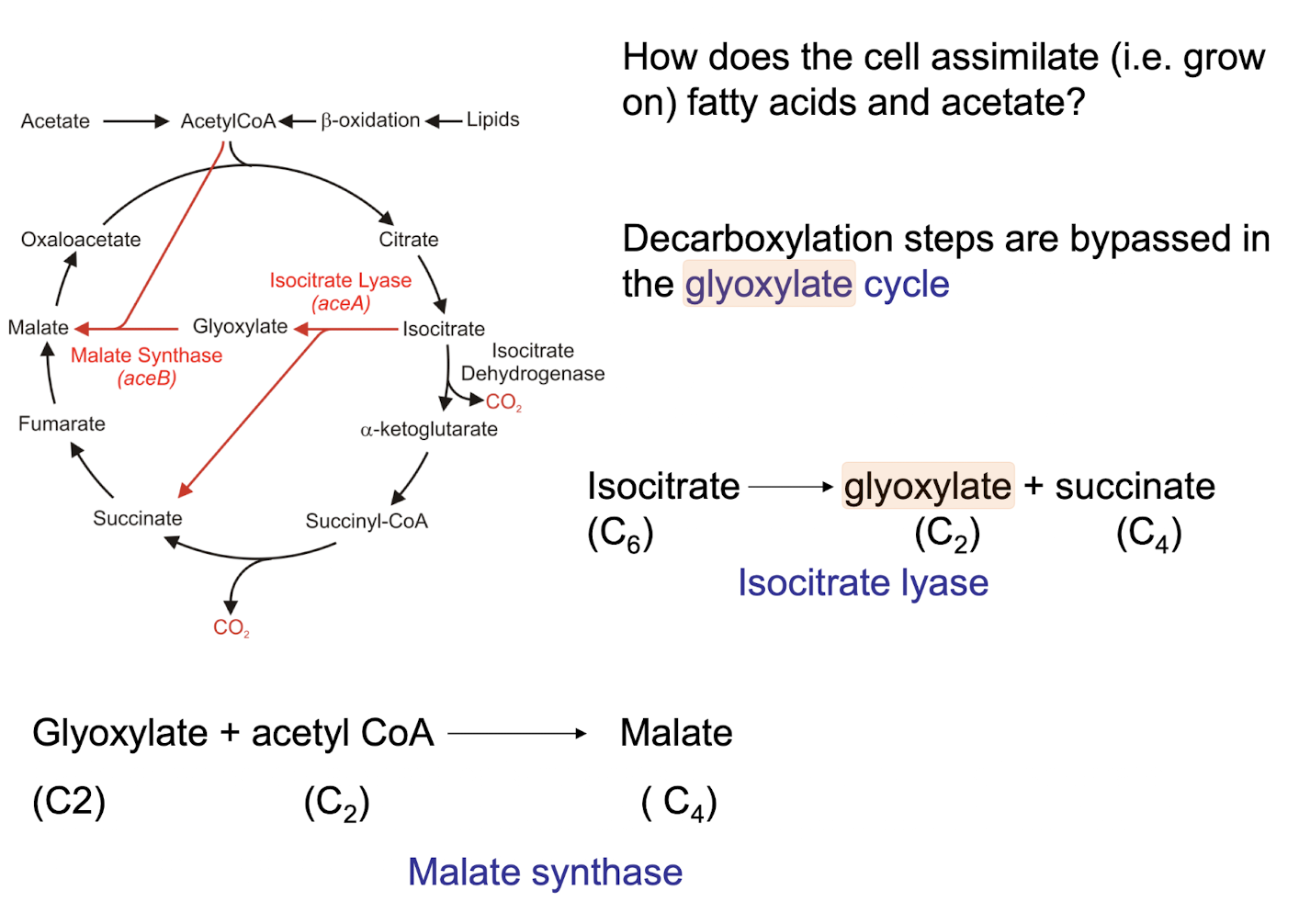
How does the glyoxylate bypass replace finite CAC intermediates?
Isocitrate lyase cleaves isocitrate → succinate and glyoxylate
Glyoxylate condenses with acetyl CoA to form malate.
Contributes a new CAC intermediate molecule
Instead of being oxidised to 2 CO2 molecules, the 2-C glyoxylate fragment condenses with another acetyl CoA to form the 4-C compound malate.
Increases levels of all CAC intermediates, because malate can be oxidised to oxaloacetate that condenses with yet another acetyl CoA to form citrate, and so on.
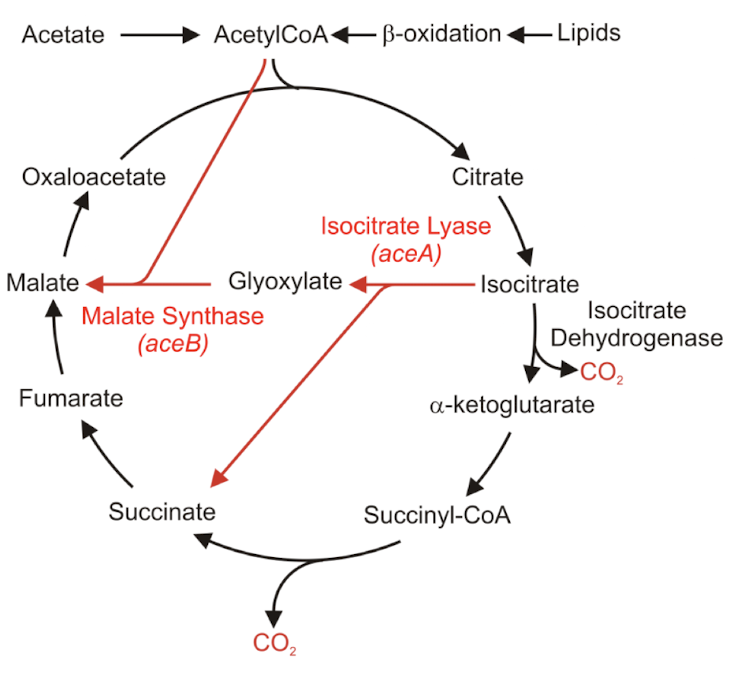
What are the functions microtubules, microfilaments and intermediate filamanets?
Microtubules are composed of tubulin monomers.
Form the cytoskeleton, are present in cilia and flagella,
Function in intracellular transport like movement of secretory vesicles
Form mitotic spindles in cell division.
Microfilaments, made of actin & Intermediate filaments made of keratins, also contribute to the cytoskeleton structure
What protein in cilia and flagella allow sliding of microtubules past one another
Dynein, which uses ATP to facilitate this movement.
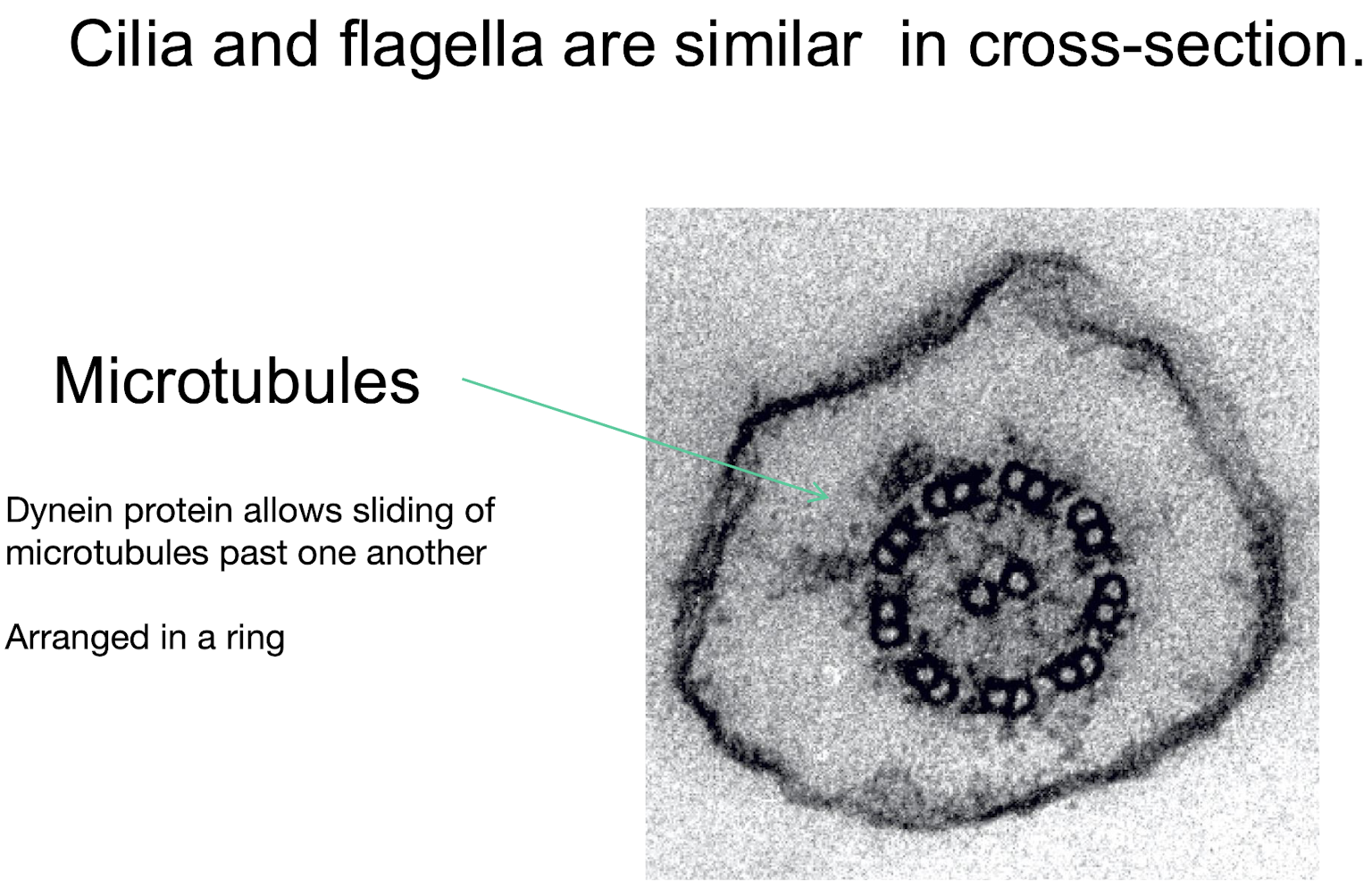
Differentiate mitosis and meiosis.
Mitosis: replication and equal segregation of identical chromosomes to two diploid/daughter cells.
Meiosis: reductional division producing haploid gametes with recombined alleles.
how are these new genetic combinations in meiosis formed?
Parental cell is initially diploid, having acquired a set of chromosomes from each of two genetically different haploid individuals.
Reciprocal exchange of DNA between homologous chromosomes (by homologous recombination), so that new combinations of genes are formed.
Process ends with formation of haploid cells containing chromosomes with new assortments of alleles (variants of individual genes).
Sexual reproduction speeds up evolution because different spontaneous mutations can rapidly be combined into single organisms, and all the combinations can be tested by natural selection.
What is the endosymbiotic hypothesis?
Comprises 2 main events:
Proposes that a primitive eukaryotic progenitor cell engulfed a GN aerobic bacterium that was capable of metabolising sugars by oxidative phosphorylation.
The captive bacterium enabled its host to obtain more energy from organic substrates, leading to diversity among eukaryotes.
This aerobic bacterium evolved into the mitochondrion.
The 2nd event suggests that a similar process occurred with a mitochondriate eukaryote engulfing a photosynthetic cyanobacterium, leading to the development of chloroplasts in plants and algae.
This then led to chloroplast formation further enhancing energy acquisition and metabolic versatility.
What genes do mitochondrial and chloroplast genomes encode for?
Mitochondria: encode ETC components (complexes I, III and IV), ATP synthase, rRNAs and tRNAs.
Chloroplasts: larger than mitochondria + encode proteins for the photosynthetic machinery, including genes for PSI + PSII, ATP synthase, cytochromes and rRNAs and tRNAs essential for protein synthesis.
What evidence supports endosymbiotic origins of mitochondria from a GN bacterium ?
Contain their own circular DNA similar to bacterial genomes
Sequence level similarities for genes needed for OP rather than eukaryotic genes suggesting transfer of DNA from endosymbiont genomes to host
Similar size to GN bacteria, surrounded by double membrane
OM has porins similar to GN bacteria
Contain ribosomes similar to bacteria i.e. 70S ribosomes sensitive to antibiotics that target bacterial ribosomes
What evidence supports endosymbiotic origins of chloroplasts?
Chloroplasts contain their own circular DNA, similar to that of cyanobacteria.
Genetic sequences show homology with prokaryotic genes involved in photosynthesis.
Similar size and structure to cyanobacteria, surrounded by a double membrane.
What is primary endosymbiosis?
Initial capture by primitive eukaryotic cells of bacteria capable of oxidative phosphorylation or oxygenic photosynthesis, leading to development of mitochondria and chloroplasts.
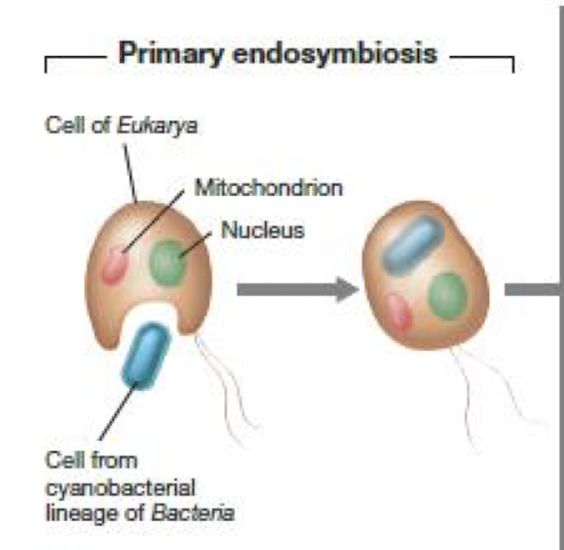
What did the early photosynthetic eukaryotes evolve into?
Red and green algae and eventually land plants.
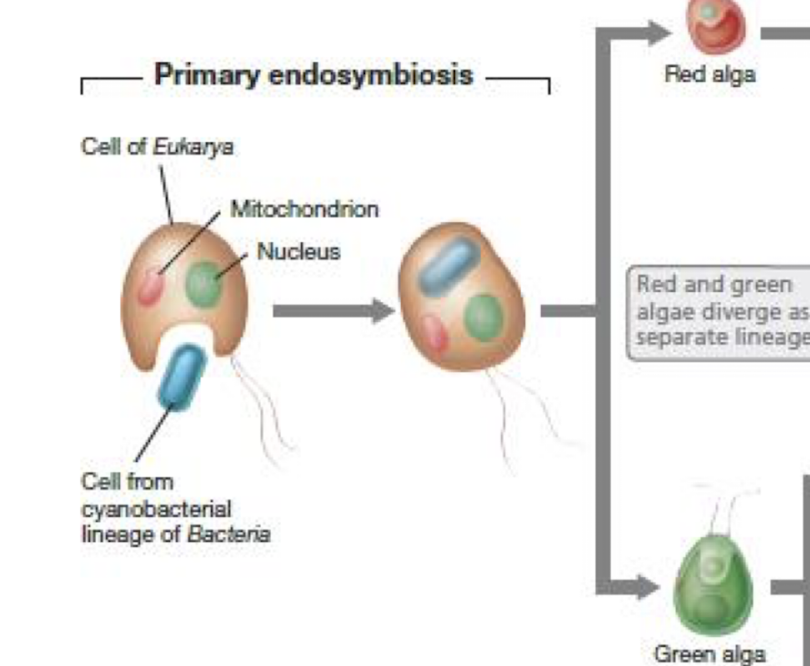
What is secondary endosymbiosis?
A eukaryote engulfs another eukaryote that already contains a chloroplast derived from a bacterial endosymbiont i.e. engulfment of red and green algae by other protists spreading photosynthesis among protists.
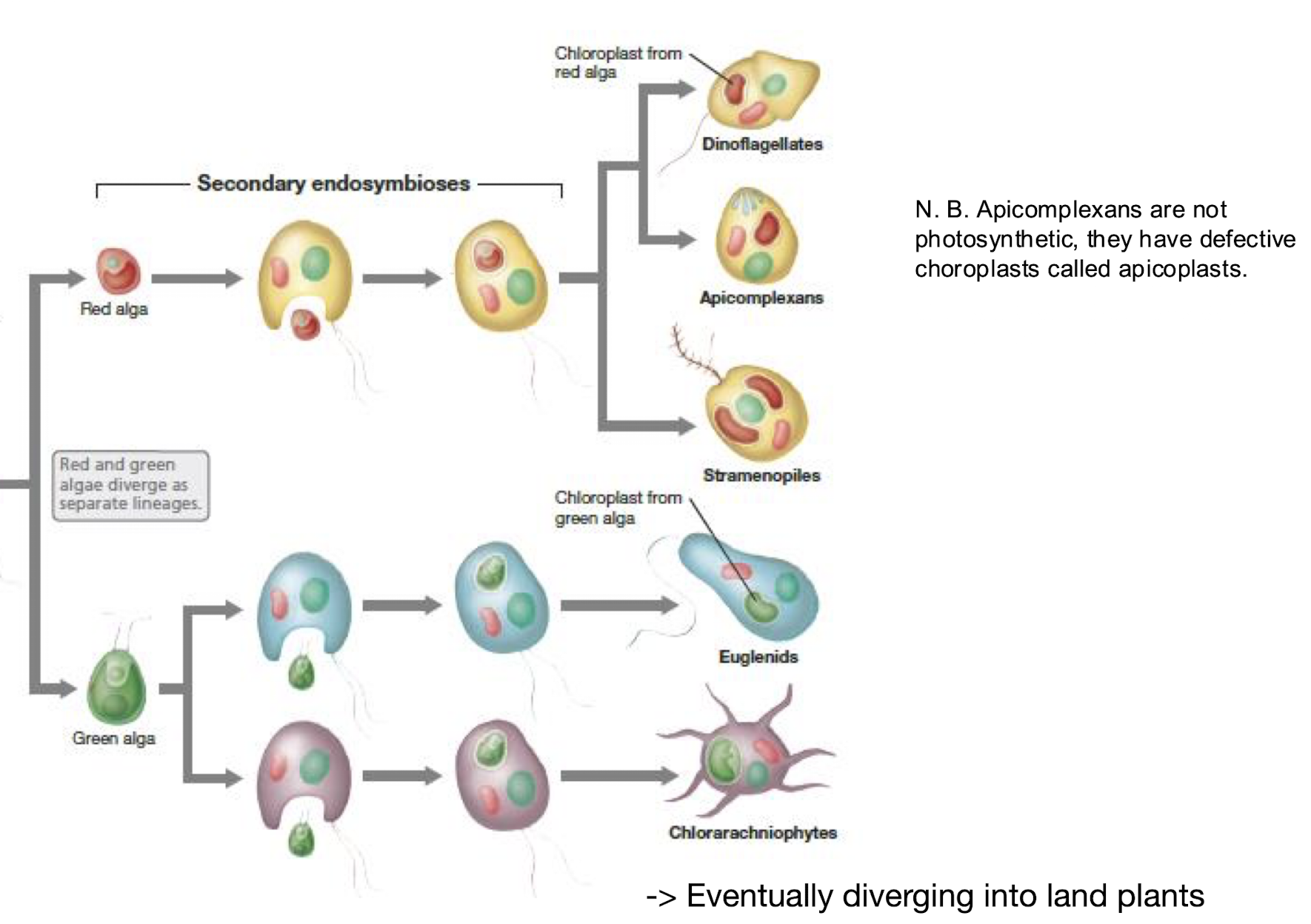
What are protists, and what energy strategies do they use?
Any eukaryote that are not fungi,land plants or animals, typically unicellular + motile
Energy is acquired via organotrophy (organic compounds) or phototrophy (photosynthesis), with aerobic respiration or fermentation in some cases.
Name the six eukaryotic supergroups
Archaeplastida
Rhizaria
Chromalveolata
Excavata
Amoebozoa
Opisthokonta.
(ARCEAO)
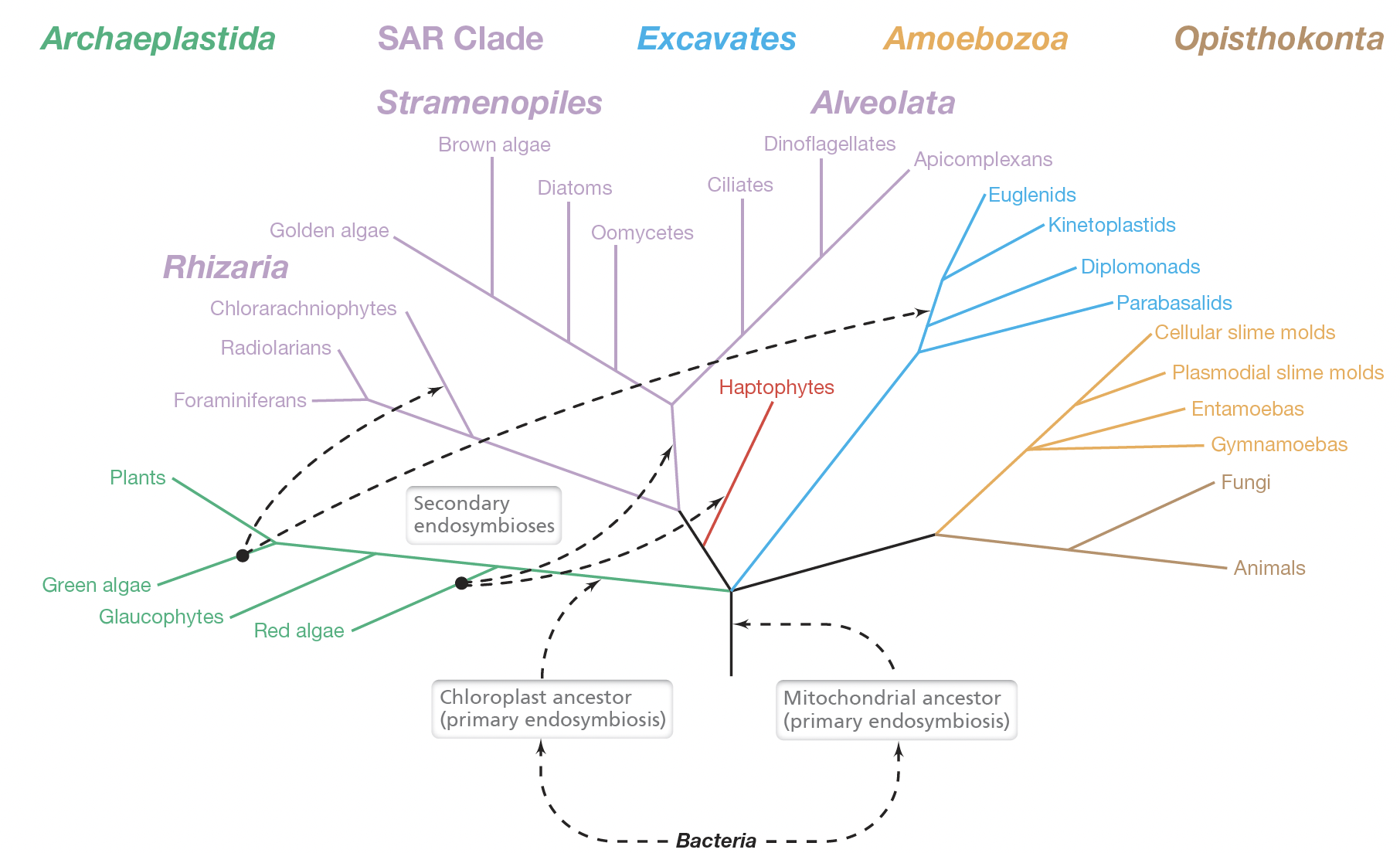
What are the 4 main protozoal groups?
1. Excavata: diplomonads, parabasalids, kinetoplasts, euglenids).
2. Chromalveolata:
Alveolata (ciliates, dinoflagellates, apicomplexans)
Stramenopiles (diatoms, oomycetes, gold and brown algae)
3. Rhizaria: formaniferans, radiolarians, chlorachniophytes
4. Amoebozoa
Why are protists of particular interest scientifically and ecologically?
Some cause serious diseases (e.g., malaria caused by Plasmodium spp.)
Photosynthetic protists drive ocean phytoplankton and food webs
Geological importance i.e remains of diatom cells covered in CaCO3 / silica have cemented overtime on ocean floors formed limestone or diatomaceous earth.
What are key features of diplomonads in the excavata group?
Flagellated but lack complete mitochondria and chloroplasts.
Obligate anaerobes and rely on fermentation and SLP to make ATP.
Have two equal nuclei and mitosomes (defective mitochondria)
Lack enzymes for a complete CAC and some other major metabolic pathways: thus are parasites that infect hosts
Giardia lamblia—what group does it belong to and a key feature?
Diplomonad which causes diarrheal disease.
Trichomonas vaginalis—what group does it belong to and a key feature?
Parabasalid;
Contains hydrogenosomes
Lacks certain CAC enzymes sexually transmitted parasite.
What are Euglena and the Euglena lineage known for?
Euglenids:
Motile; can be photosynthetic or organotrophic
Phagocytose bacteria
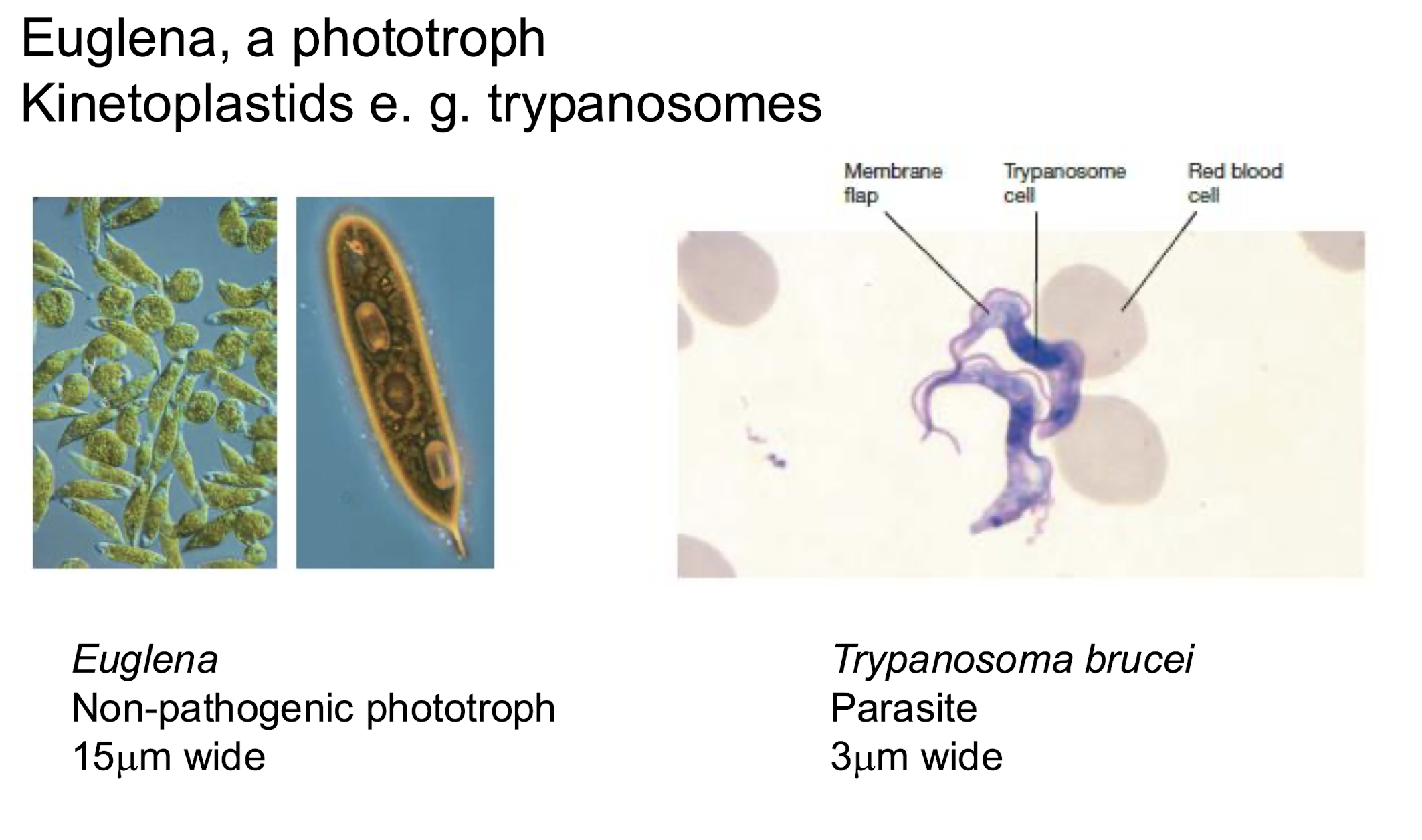
What are kinetoplastids and give examples of diseases they cause.
Large mass of mitochondrial DNA in a single mitochondrion
Trypanosoma :
T. brucei transmitted via tsetse fly and causes African sleeping sickness
T. cuzi transmitted via kissing bug causes Chagas’ disease (American trypanosomiasis)
Leishmania: leishmaniasis spread by bites by infected sand flies
What are alveolates and their three main groups?
Alveolates possess cytoplasmic sacs called alveoli under the cell membrane;
include ciliates, dinoflagellates, and apicomplexans.
Ciliates—name a well-known example and a key feature.
Paramecium; motile by cilia and feed on bacteria.
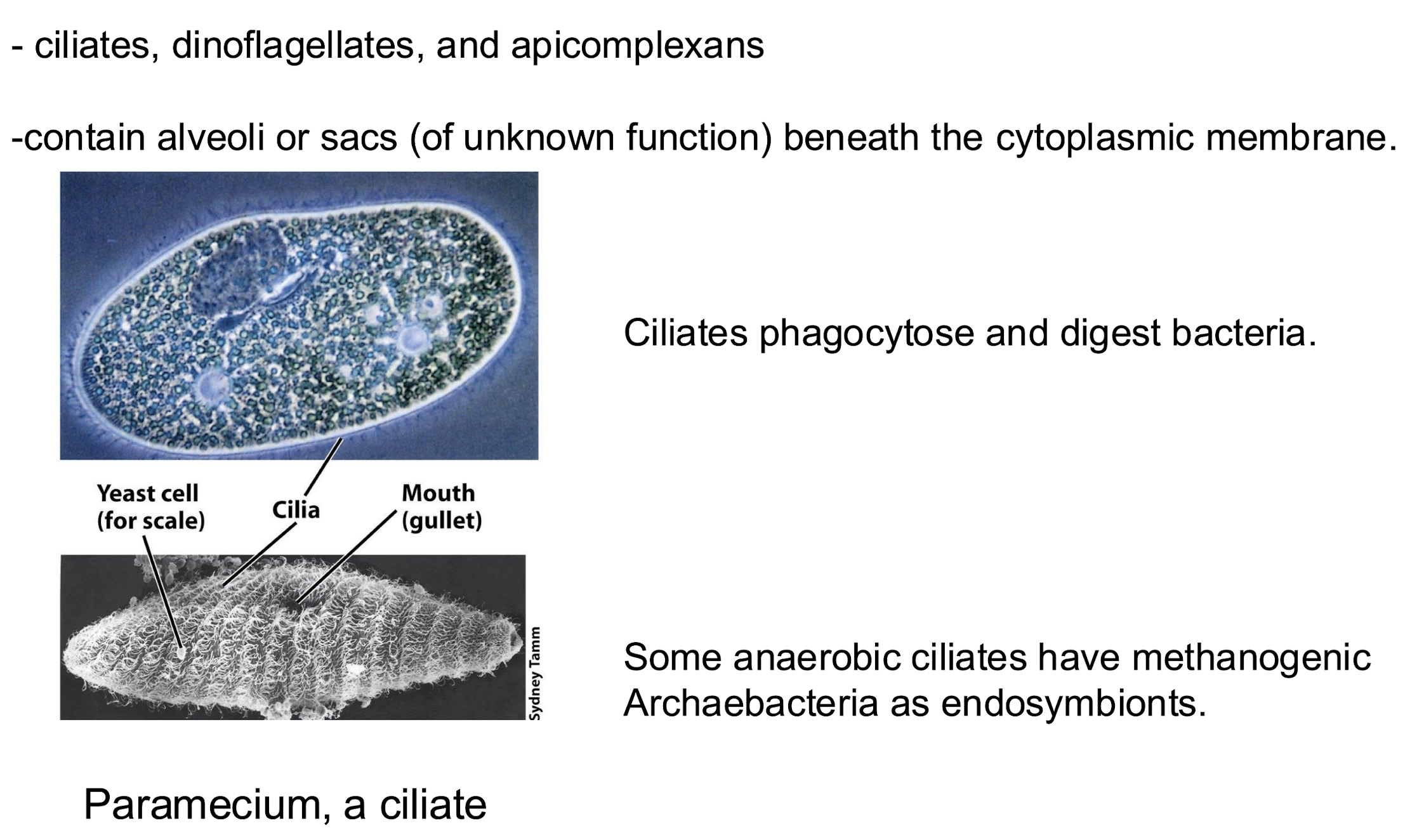
Dinoflagellates—what is a notable ecological phenomenon and a toxin they can produce?
Photosynthetic algae known for red tides (harmful algal bloom due to red xanthophylls)
Have PCP (peridinin-chlorophyll-protein) a carotenoid related red photosynthetic pigment
Produces brevetoxin and saxitoxin (neurotoxins) that poison marine life and humans

Apicomplexans—what is the apical complex and what is the apicoplast?
Sporozoans with a complex organelle near the apex for host cell invasion;
Apicoplast is a degenerate plastid involved in fatty acid and isoprenoid synthesis.
Cause serious diseases
Name examples of apicomplexans.
that cause infectious disease
Cryptosporidium (diarrheal illness)
Toxoplasma (toxoplasmosis)
Eimeria (coccidiosis)
Plasmodium (malaria)
What are stramenopiles and what groups do they include?
Flagellated with distinct hair-like extensions; include diatoms, oomycetes, and golden/brown algae.
Diatoms—why are they ecologically important and what is their cell wall composed of and what is a negative substance produced by them?
Major phytoplankton and primary producer
Silica-based cell walls called frustules
Can produce domoic acid i.e. Pseudo-nitzchia secretes domoic acid, a neurotoxin that causes amnesiac shellfish poisoning
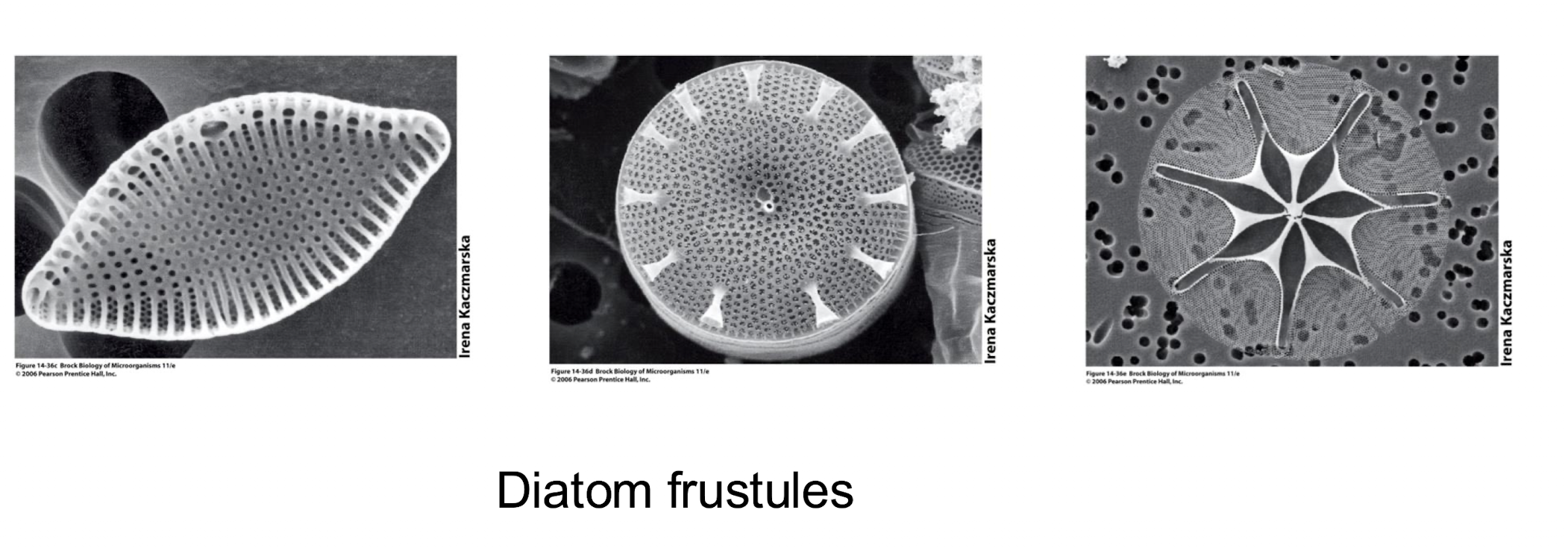
Oomycetes—give a disease-causing example and a key growth feature.
Phytophthora infestans (potato blight) and Pythium causes plant root diseases
Grow as filaments with multinucleate hyphae.
The mass of hyphae decomposes plant and dead animal material in aquatic environments.
Golden algae and brown algae—what pigment distinguishes them?
Both are photosynthetic;
golden algae are unicellular;
brown algae are multicellular (kelps)
Both contain fucoxanthin.
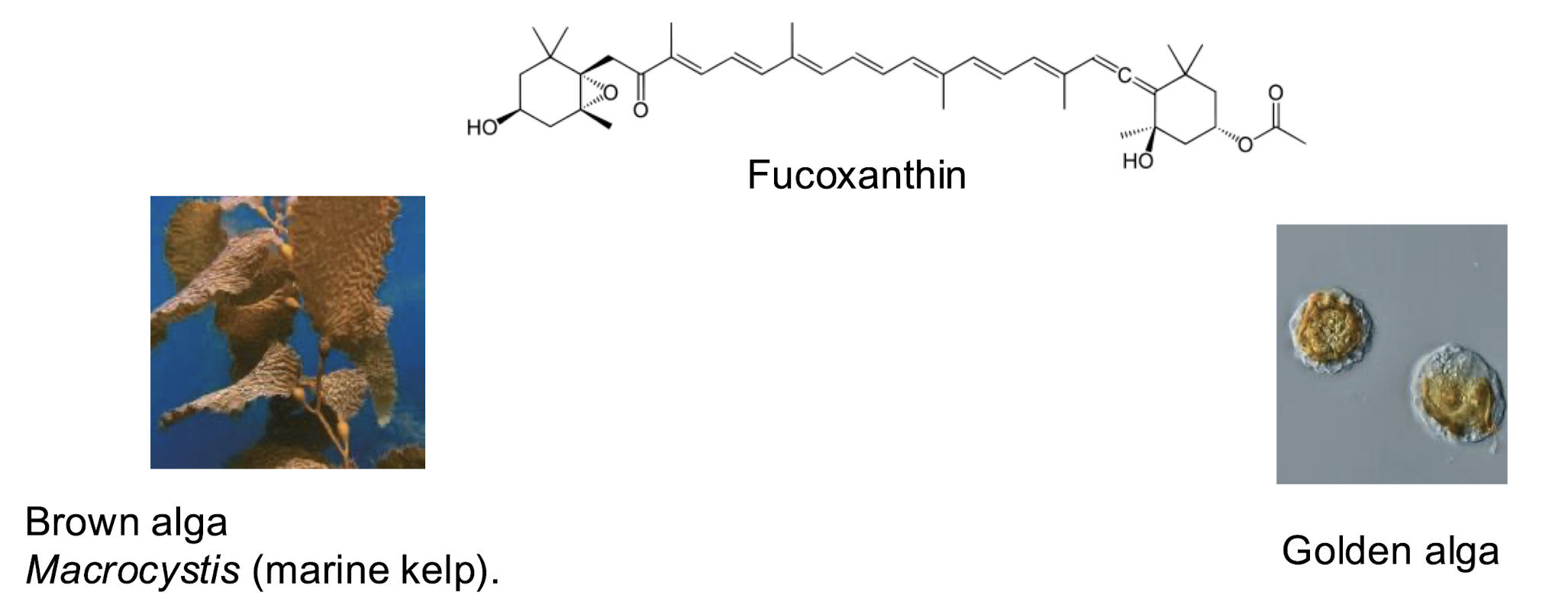
Rhizaria—name three groups and a distinctive feature for each.
Chlorarachniophytes (secondary endosymbiosis with green algae)
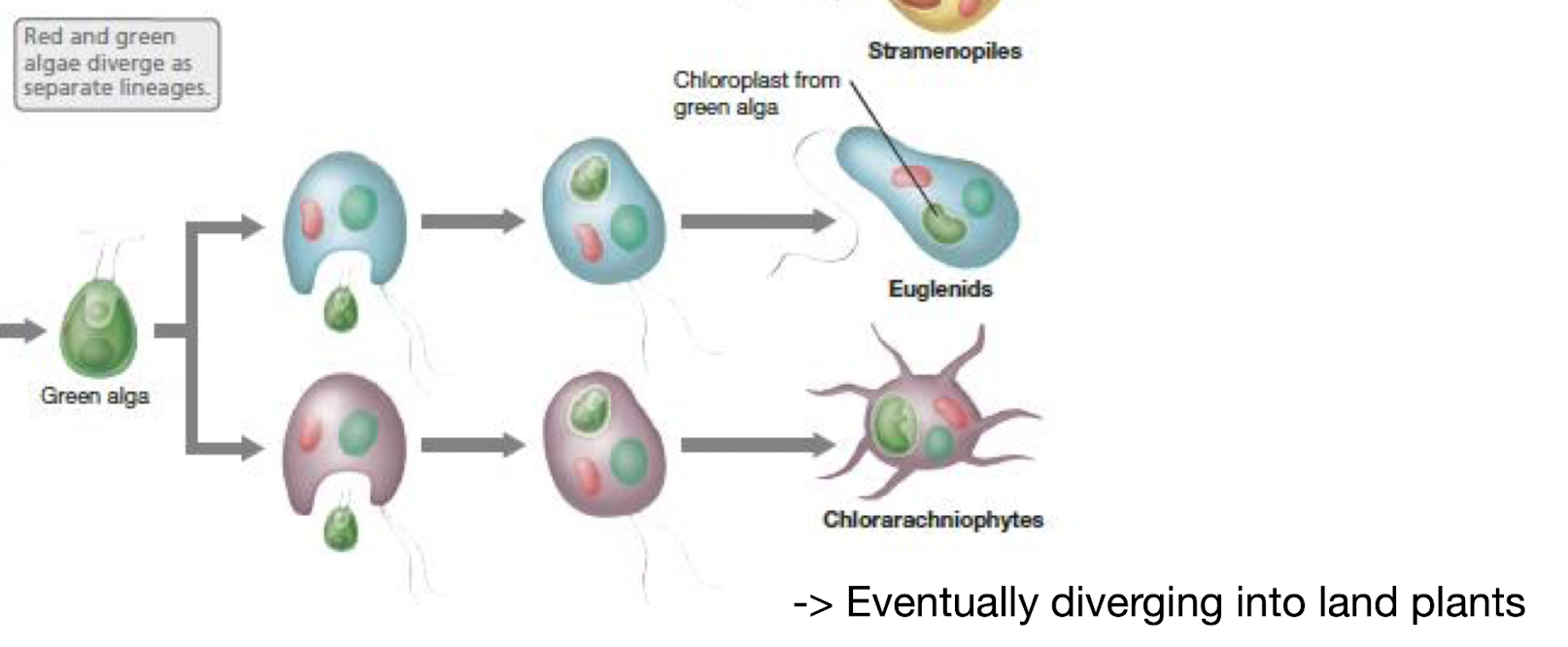
Foraminiferans (CaCO3 shells; fossilized white cliffs of Dover);
Radiolarians (silica shells; buoyant, heterotrophic).
What are Amoebozoa and give two examples of organisms in this group?
Amoeboid organisms with lobe-shaped pseudopodia; examples include gymnamoebas and slime molds like Physarum (plasmodial) and Dictyostelium (cellular).
What is a pathogenic species apart of the Amoebozoa group of protists?
Entamoeba histolytica causes amoebic dysentery, where ulceration of the intestinal tract gives a bloody
diarrhoea
What role do slime molds play in biology and ecology?
In response to starvation, cells
produce cAMP and aggregate to form a slug, then a fruiting body which forms vegetative spores.
Although slime molds are simple organisms,they show social behaviour and a primitive kind of intelligence in finding food sources and dealing with adversity.
e.g. Dictyostelium discoideum
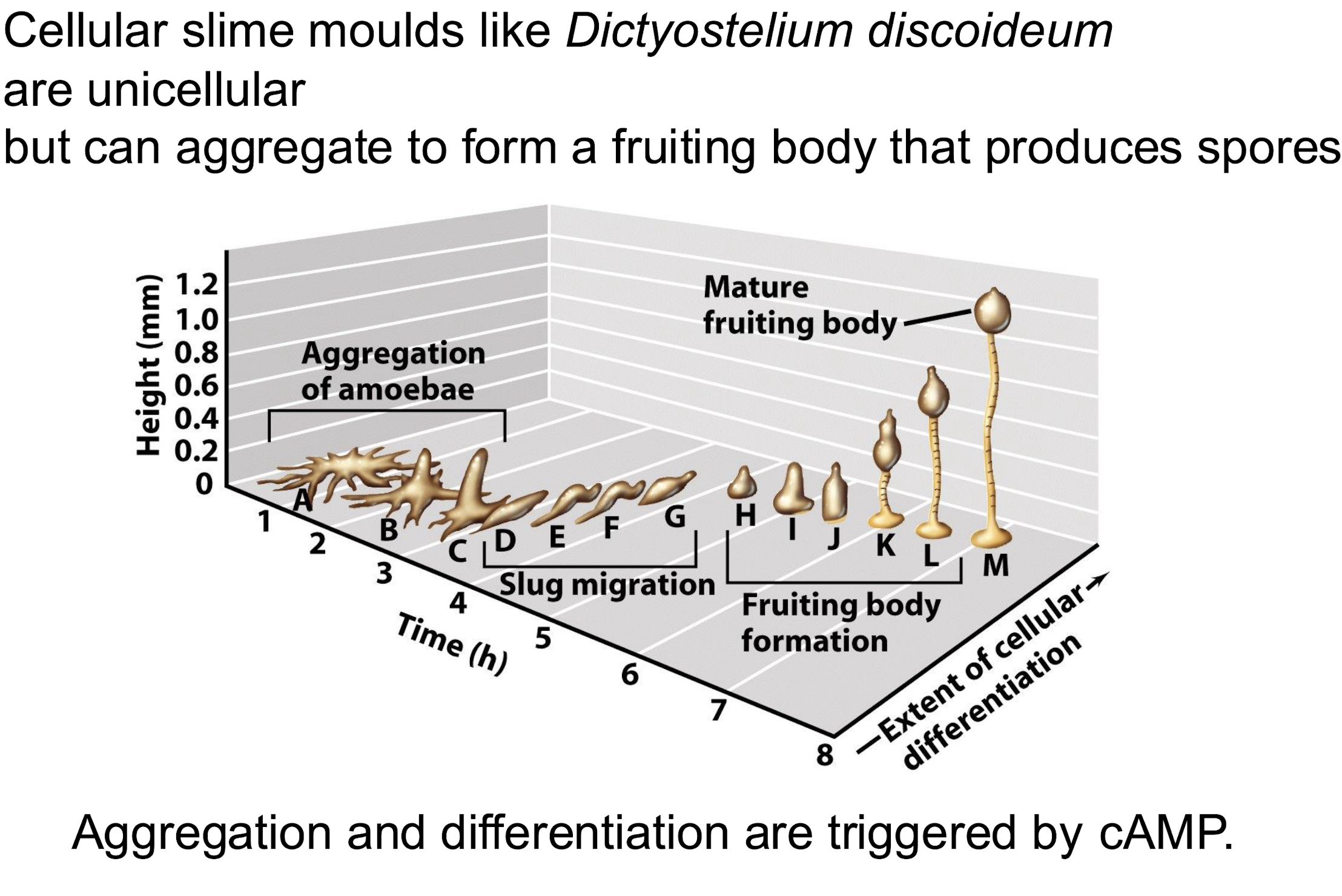
Red vs green algae—what is a defining pigment difference and a practical use of red and green algae?
Red algae have phycobiloproteins : phycoerythrin, phycocyanin, allophycocyanin; source of agar and carrageenan.
Green algae have chlorophylls a and b and lack phycobiloproteins; Botyrococcus braunii - can produce crude oil
Botryococcus braunii—why is it notable?
Colonial green alga that secretes long-chain hydrocarbons (C30-C60); studied as a potential biofuel source.
What are phycobiloproteins and give two examples?
Pigment-protein complexes (antenna pigments) in red algae; examples include phycoerythrin and phycocyanin (and allophycocyanin).
Complexed with linear tetrapyrroles that function as
antenna pigments, which capture light wavelengths not absorbed by chlorophylls.
Pass energy to reaction centre chlorophylls.
What is a notable feature of fungal cell walls and their basic life cycle?
Cell walls composed of chitin; fungi can be haploid or diploid during life cycle; reproduce via spores; hyphae form mycelium.
Identify the five major fungal groups used in classification.
Chytridiomycetes
Zygomycetes
Glomeromycetes,
Ascomycetes
Basidiomycetes.
Chytridiomycetes—an example and a disease they are associated with.
Batrachochytrium dendrobatidis; causes chytridiomycosis in amphibians.
Zygomycetes and Microsporidia—name a characteristic.
Zygomycetes include Rhizopus; Microsporidia are obligate parasites with mitosomes and lack functioning mitochondria.
Glomeromycetes—what is their ecological role?
Obligate symbionts forming endomycorrhizae with plant roots to aid nutrient uptake.
Ascomycetes—what is a key reproductive feature?
Ascus produces haploid ascospores after meiosis and mitosis; includes Saccharomyces, Candida, Aspergillus.
Basidiomycetes—describe their reproductive structure.
Mushrooms and toadstools; dikaryotic mycelium forms basidiocarps; meiosis yields basidiospores.